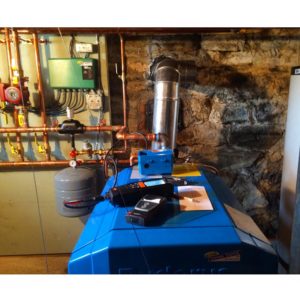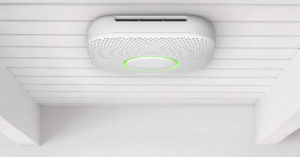Daylight Savings is a great time to ensure your Carbon Monoxide & Smoke Detectors are operating properly. As you remember to set your clocks back, make it a habit to change the batteries in your CO & Smoke Detectors! Doing this every year will ensure your family and pets will be alerted in the event of a fire or potentially fatal carbon monoxide leak.
Every year in New England, we hear of tragic incidents where a family or a person dies from overexposure to carbon monoxide in their own home. According to the CDC, more than 500 people die each year from unintentional, non-fire related CO poisoning. 3 out of 5 of these deaths occur in homes without working CO & smoke detectors. According to the NFPA, 2/3rds of fire deaths occur in homes without working smoke alarms. 71% of smoke alarm failures are the result of dead, missing, or disconnected batteries.
Because we rarely hear them chirp when the batteries are running low, or because they’re out-of-sight out-of-mind, these essential life alarms are easy to forget about! Carbon Monoxide is often referred to as the “invisible killer” because it’s tasteless, odorless, and cannot be detected by sight. Homes these days can become engulfed in flames in less than 5 minutes time, versus the 3o minutes it took to engulf a house in the 1970’s. This is because material used in today’s homes and furnishings can be highly flammable and the smoke is extremely toxic!
Carbon Monoxide occurs as a by-product of incomplete combustion. It can be sourced from improperly installed, maintained, or ventilated gas, oil, or wood-fired heating systems and water heaters. Stoves, running cars in attached garages, burning charcoal, and smoking cigarettes are other sources of Carbon Monoxide. Avoid running fuel appliances and equipment in non-ventilated areas. Carbon Monoxide can also backdraft into your house if the flues or vents from your heating appliances or dryer become clogged with snow or debris. The symptoms are typically flu-like; nausea, vomiting, dizziness, headaches, weakness, and confusion are just a few of the symptoms. Your pets can also become ill.
To safeguard yourself, your loved ones, and your pets from the risk of fire or CO poisoning, make sure you test your alarms monthly, in addition to changing the batteries each year. Smoke & CO detectors should be changed out every 10 years, or sooner if the ‘test’ function on the detector no longer works. A smoke & CO detector should be located on every floor of your house and just outside of bedrooms. Make sure hardwired smoke & CO detectors have battery backup in the case of a power-outage.

Proper heating system maintenance includes a combustion analysis test, as shown here on a Buderus boiler system installed by GSK Climate Control, where our Service Manager is using his combustion analysis tools
One of the most effective ways to avoid CO poisoning is to have regular annual maintenance done on your gas or oil heating systems. In 2005, a 20 year-old UVM student, died in a Burlington apartment. The cause was determined to be a CO leak from the boiler system. The apartment did not have a CO & smoke detector. Your furnace or boiler should be top on the list of equipment that should be maintained annually, just like your car – both are just as necessary. Another proactive measure to take, is to ensure your heating system’s flues and vents are clear and free of debris to avoid backdrafting the potentially lethal combustion gases back into your home.







